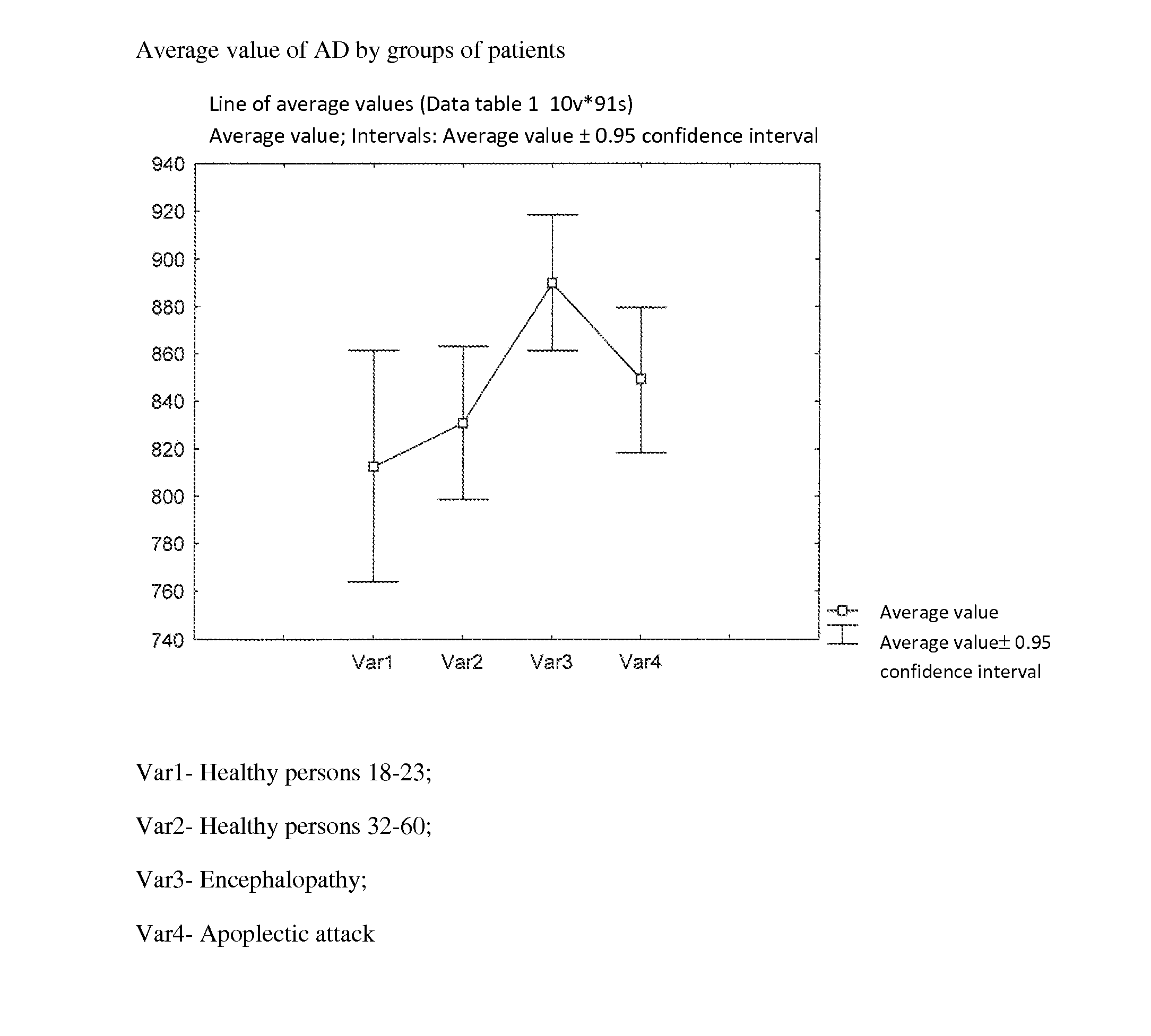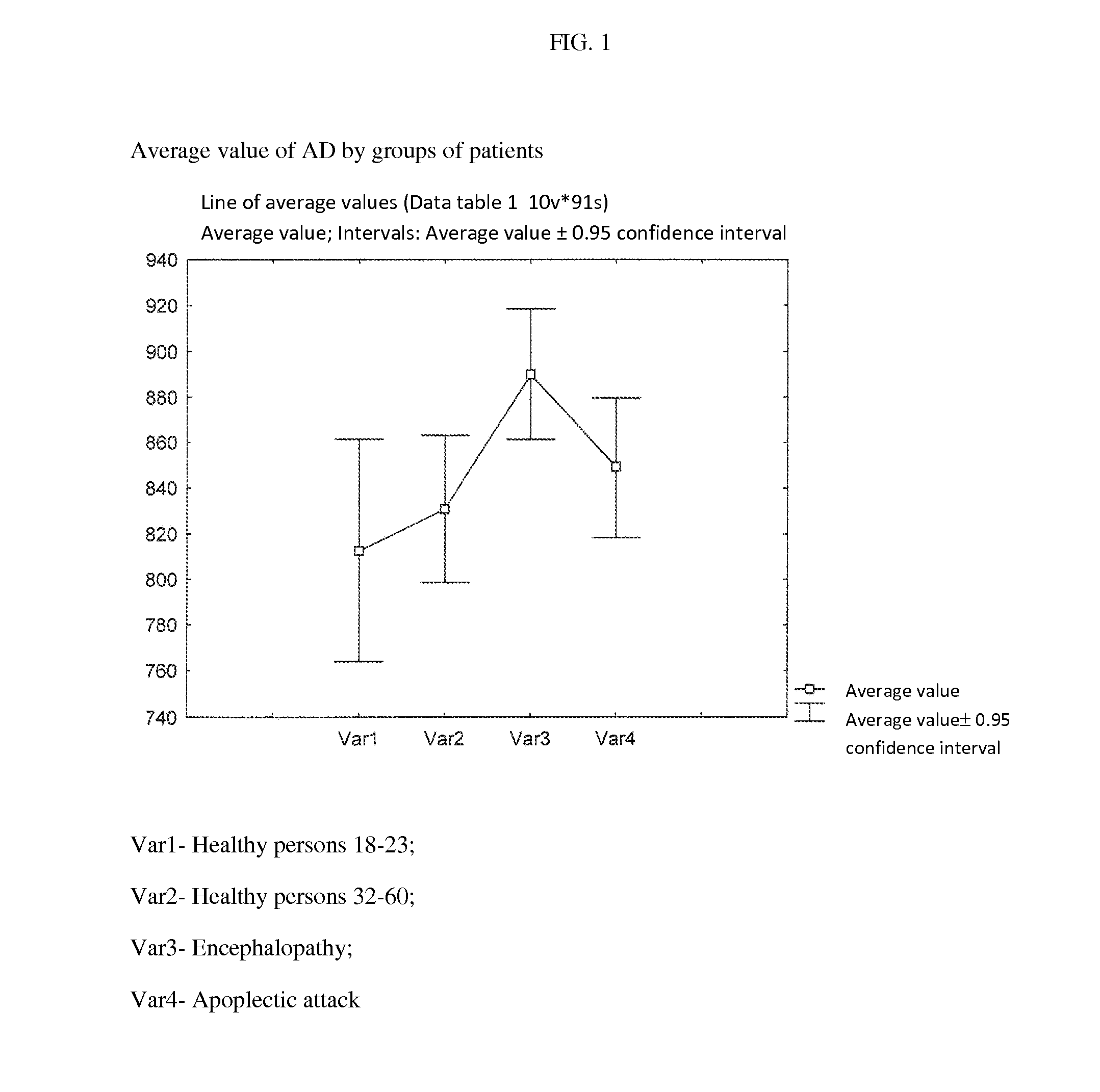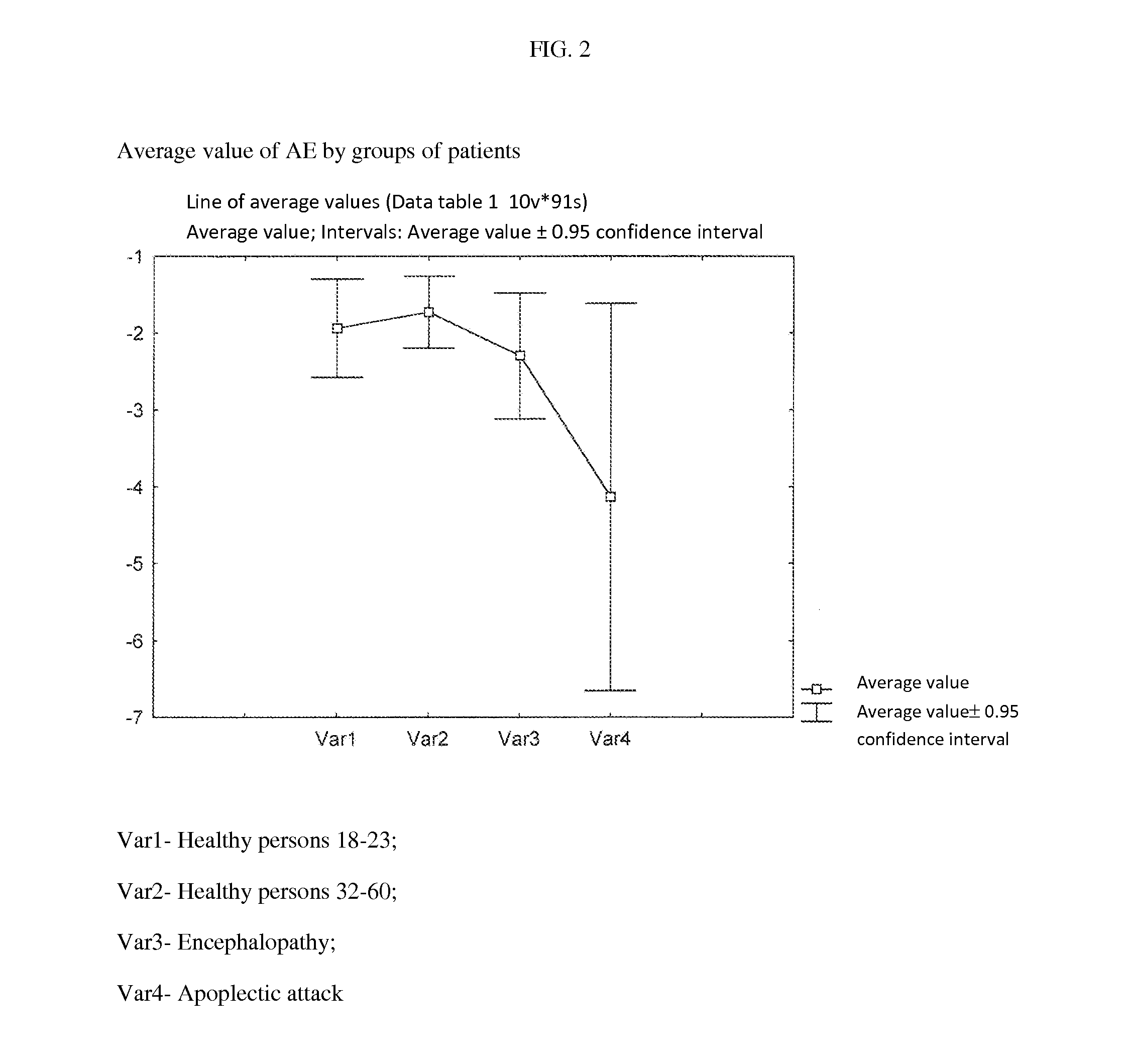Systems and methods for cardiac rhythm variability analysis
a system and variability technology, applied in the field of cardiac function analysis, can solve the problems of spectral indices, inconvenient characterization of individual peculiarities of human functional states, and limitations of time-domain and frequency-domain methods, and achieve the effect of high operational reliability assessmen
- Summary
- Abstract
- Description
- Claims
- Application Information
AI Technical Summary
Benefits of technology
Problems solved by technology
Method used
Image
Examples
Embodiment Construction
[0079]One intended purpose of the present invention is to improve the diagnostic capability and accuracy of the estimation of the functional state of regulation systems of the human organism, and determination of the presence and / or absence of the pathology of the vegetative regulation of the cardiac rhythm.
[0080]This feature of the present invention may be attained due to the method of the study of cardiac rhythm variability including, for example, an electrocardiogram recording with the subsequent calculation of the duration of the beat-to-beat intervals and drawing up of the rhythmogram, and additionally, data on the duration of the R-R intervals according to the present invention are entered, by any means, into a computer (or other data storage / processing device), where, from the rhythmogram composed of N values of the beat-to-beat intervals, a sequence of samples of the values of the rhythmogram with volume n may be selected by means of a sliding shift by one value. For the seq...
PUM
 Login to View More
Login to View More Abstract
Description
Claims
Application Information
 Login to View More
Login to View More - R&D
- Intellectual Property
- Life Sciences
- Materials
- Tech Scout
- Unparalleled Data Quality
- Higher Quality Content
- 60% Fewer Hallucinations
Browse by: Latest US Patents, China's latest patents, Technical Efficacy Thesaurus, Application Domain, Technology Topic, Popular Technical Reports.
© 2025 PatSnap. All rights reserved.Legal|Privacy policy|Modern Slavery Act Transparency Statement|Sitemap|About US| Contact US: help@patsnap.com



